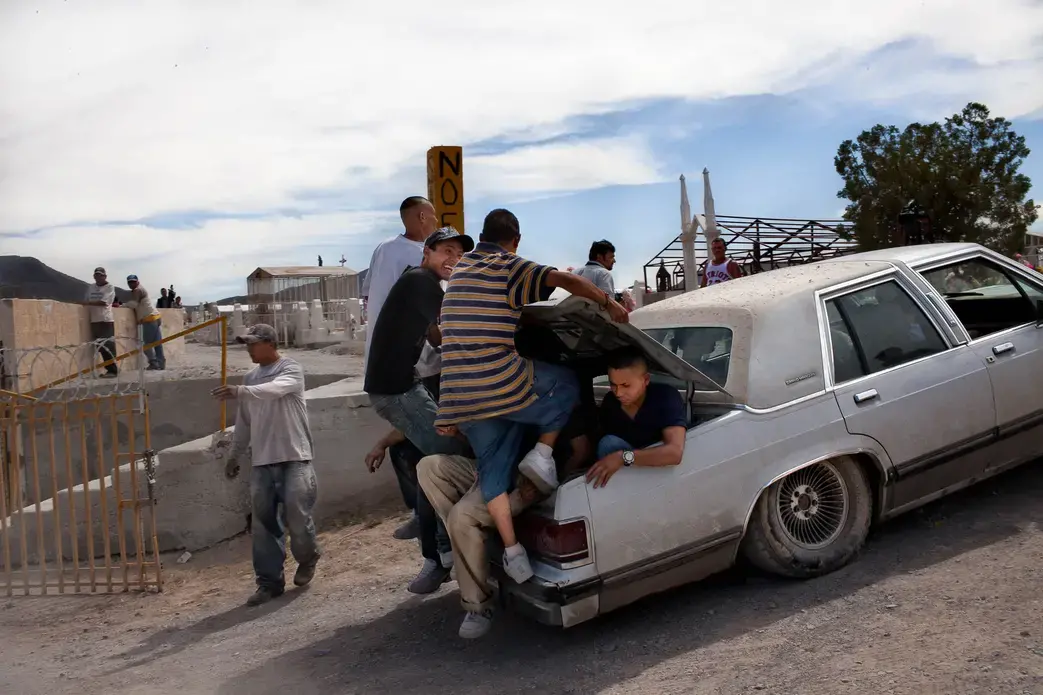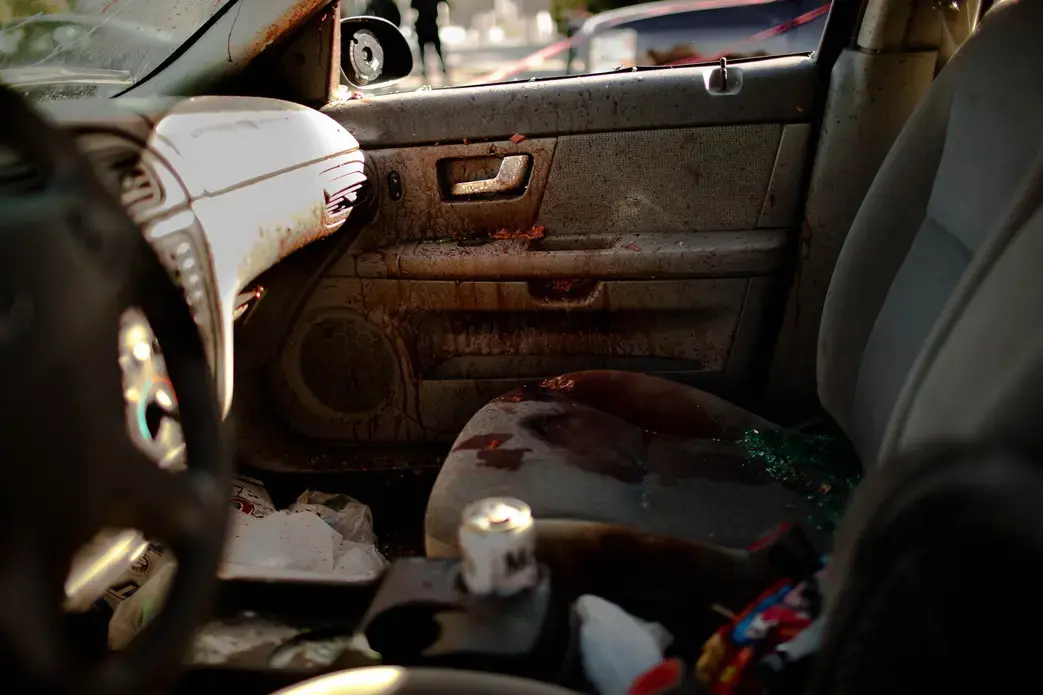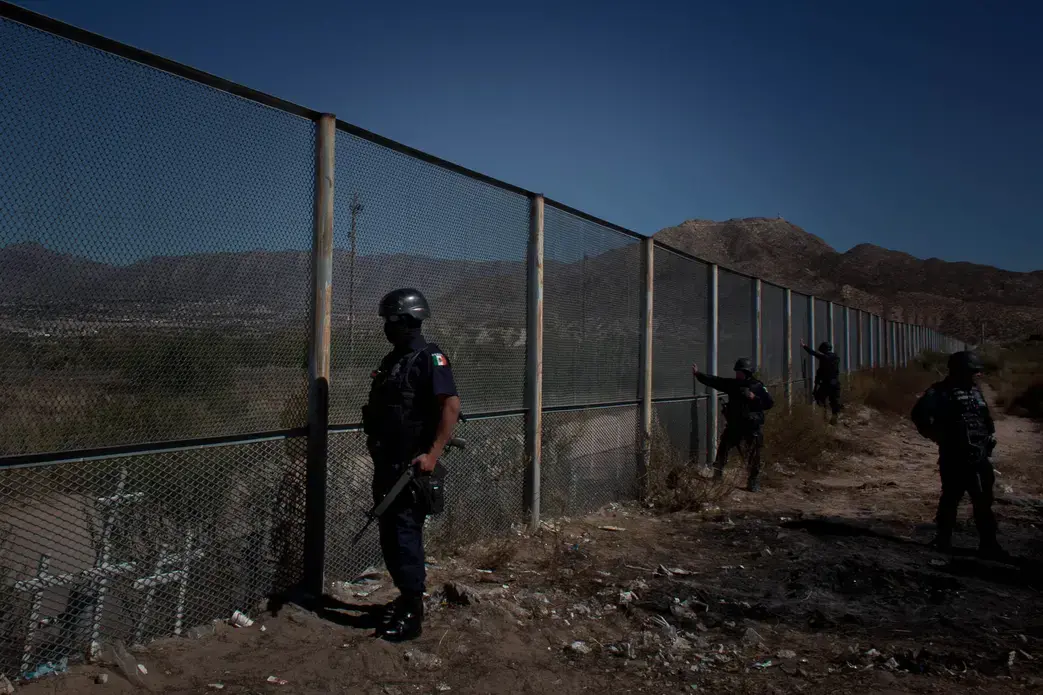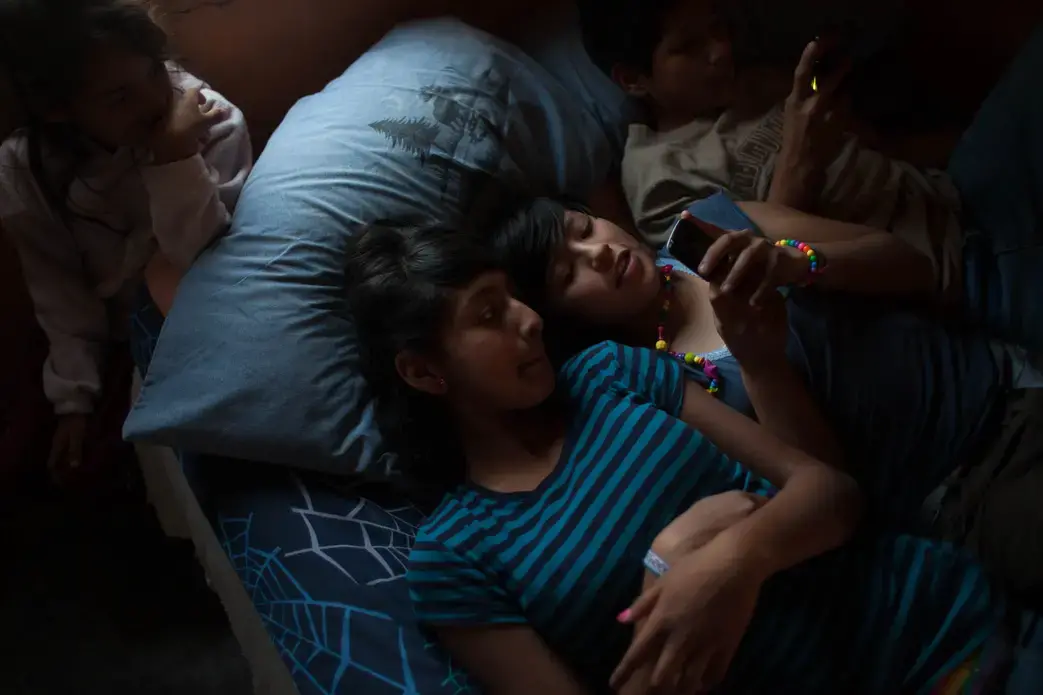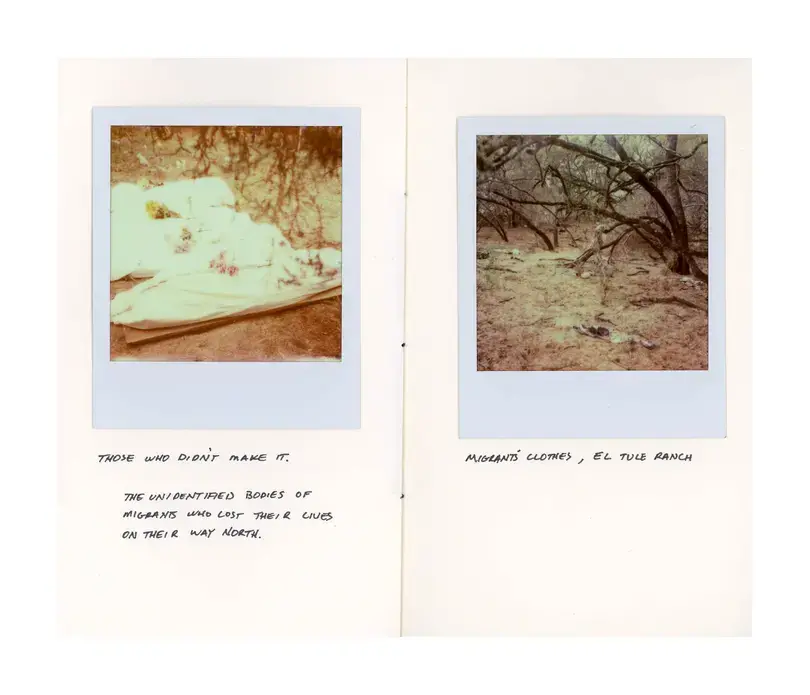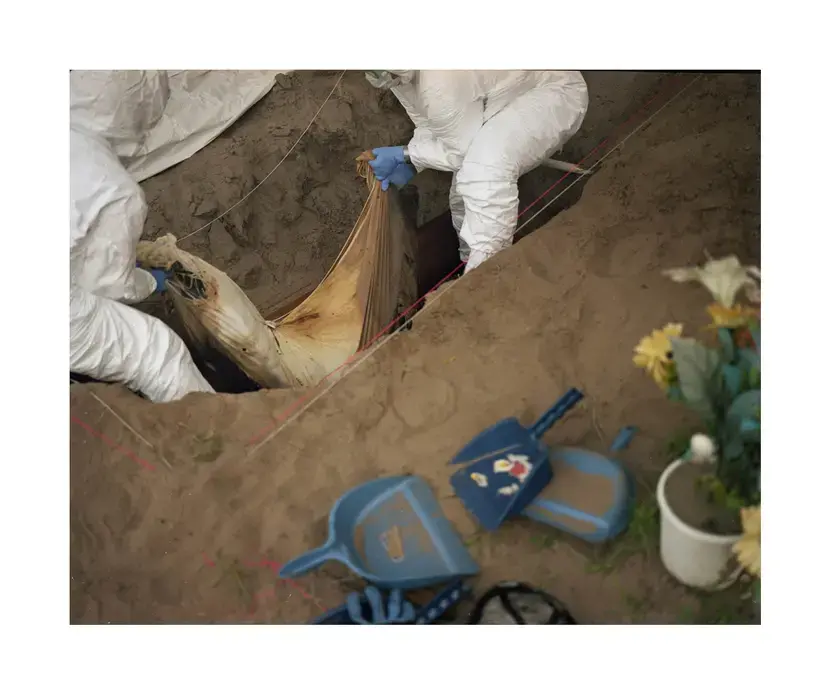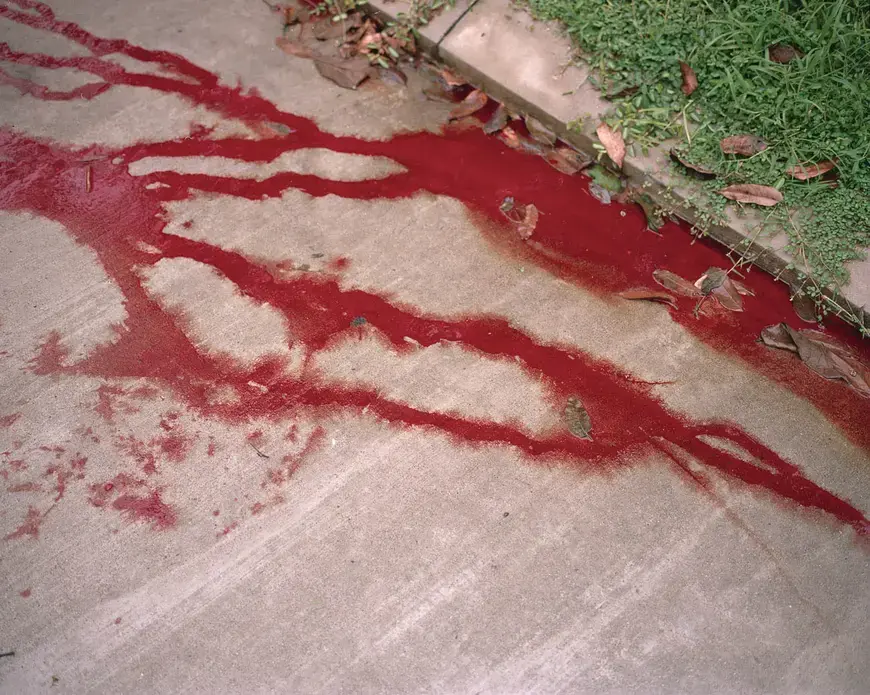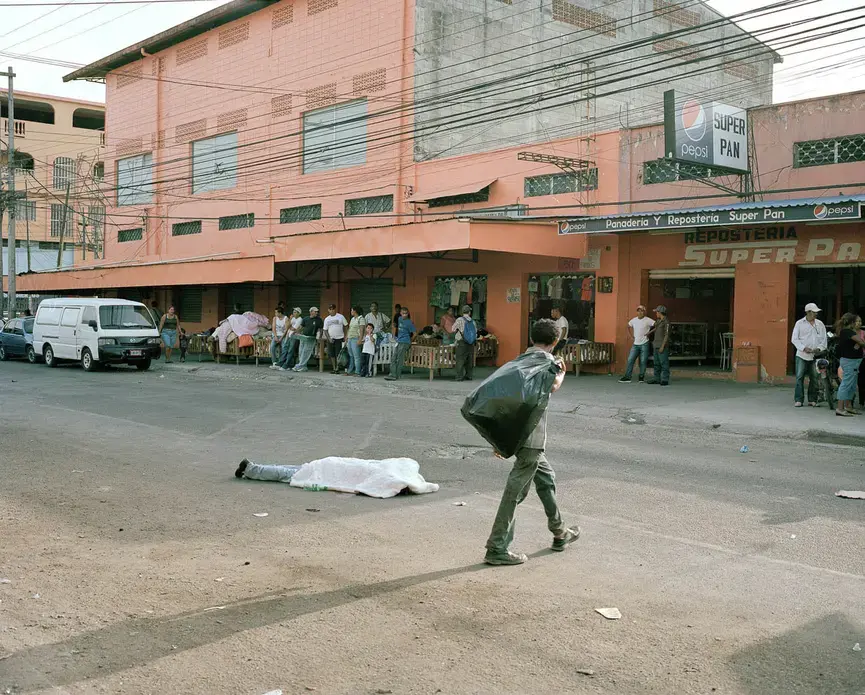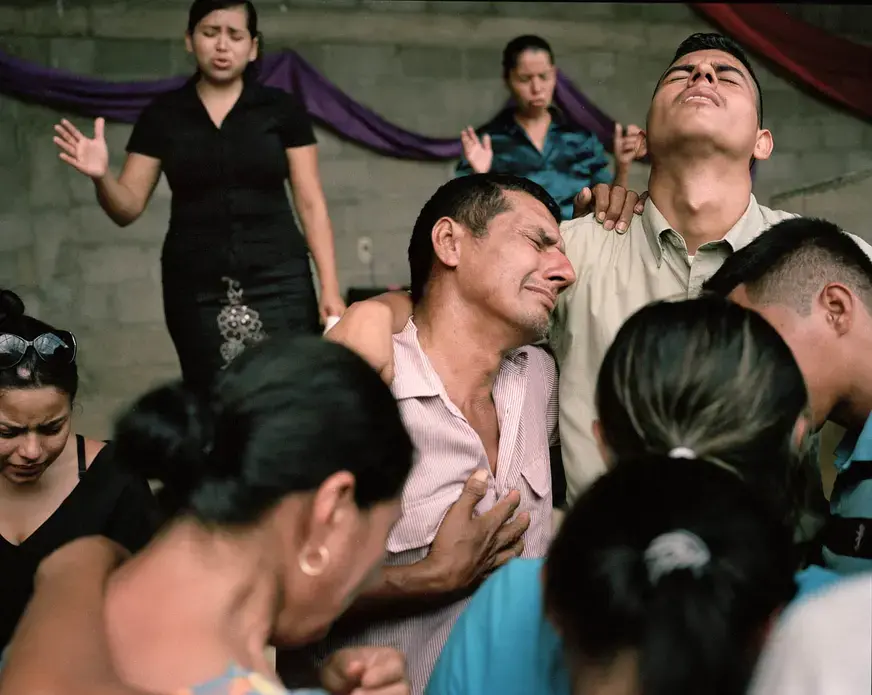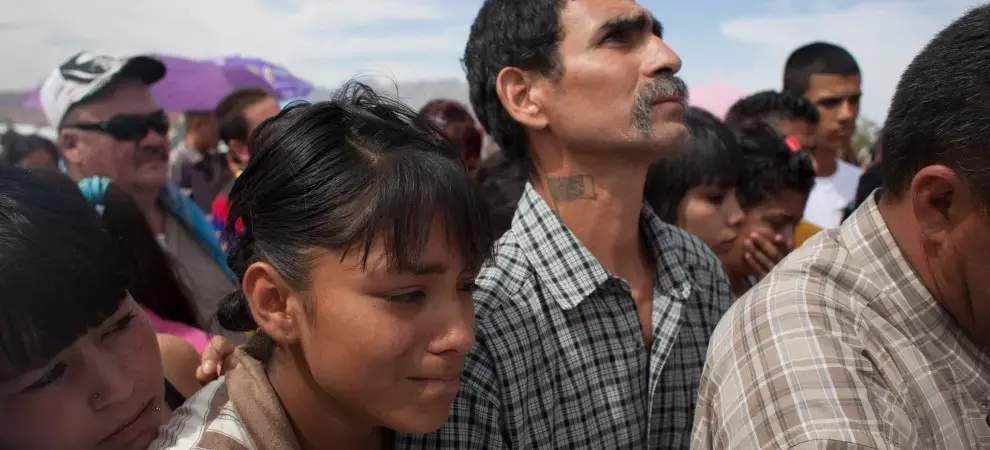Very few photographers have the gift of finding beauty within conflict. Photographer Dominic Bracco II believes that it's important to humanize the individuals involved in violent confrontations. One of his photographs in particular illustrates this principle—a striking image of a murdered man and pregnant woman embracing in a dark vehicle in Ciudad Juarez, Mexico. The image won him a second place prize in the 2011 POYi competition, bringing him international recognition.
When I met Bracco that year at the National Geographic Photography Seminar, I was struck by his warmth and lightheartedness. I would have never guessed that he was working on such a difficult and bloody story. Since then, I have watched his interests deepen as he has begun examining the forces causing the violence in Juarez—immigration issues and trade agreements—and how they are affecting life in North and Central America. A while back, we had a chance to talk more about the evolution of his work and its roots in his personal history.
Bracco grew up in Corpus Christi, Texas. His father's family is descended from Spaniards and Mexicans who colonized Texas while it was still part of Mexico. Although his family members are not immigrants themselves, these Hispanic ancestral ties—and the fact that Bracco's great uncle was a coyote and smuggled people across the border—make the issues surrounding immigration a bit more personal.
Bracco said he took many of his childhood experiences—like one instance where he watched border patrol chasing men through his hometown—to be common. When he left south Texas, his view changed. "I really got to see that, wow, this is a weird place that I grew up in," he says.
As his perspective broadened, so did his interests. While he was working for the Washington Post as an intern, something kept calling Bracco south of the border. He saved up his money, packed up his life, and drove his truck to Mexico.
But making photographs in Ciudad Juarez that were more than just brash or provocative wasn't easy, especially for a young, relatively inexperienced photographer. "At first I was obsessed with creating an image that showed that innocent people were dying every day. But it also had to be one that would give some dignity to the people that were dying," he says.
"Most photographs I had seen from Juarez had basically indicated that people who were being murdered were involved in criminal activity. The propaganda coming out of the government claimed that all of this was for the betterment of the nation. That really bothered me. The way that people were murdered in Juarez was horrific."
Bracco told me that many of his photographs in Juarez were very dark because that was how he experienced it, since he had moved there and immersed himself in the conflict. "It really was a weird sort of magnetism that took me to that place. I rejected it in so many ways at the beginning. It was like fate or some dark twisted thing brought me there," he says.
Since then he has relocated to Mexico City and begun working on projects in a similar vein but with a different approach. His personal project, "My Republic," rewinds a bit and explores immigration issues in south Texas. The project is essentially journal entries that incorporate Polaroid images of Bracco family gatherings, bodies in the desert and the abandoned belongings of immigrants along with handwritten notes.
Bracco also became interested in the longer, global tail of immigration issues. When he discovered that many of the immigrants coming through Mexico and Texas were Honduran, he sought to investigate more deeply. Honduras is a country plagued by indiscriminate violence that was set in motion by a coup d'etat in 2009. Since then, Honduras has become a major drug route for smuggling cocaine into the U.S.
He and his writing partner Jeremy Relph took a self-funded trip down to Honduras to paint a more intimate picture of what was happening on the ground. Bracco says, "The work I'm doing in Honduras is different than Juarez. I want to create an honest feeling of what it feels like to be there as well as show the violence. Honduras is absolutely beautiful. But it's also absolutely terrifying. So the pictures that I've been making are actually a lot brighter, and they feel a little bit loftier. And that's intentional. I want to celebrate it in a way."
On covering conflict, Bracco says, "In this world whoever is strongly ideological or radical often has the loudest voice in the room. As journalists, we're always trying to put ourselves in other people's shoes and understand things from their perspective. And so often, because you're trying to understand both the victim and the perpetrator, sometimes you might sympathize with both." While this can be a tricky line to walk, Bracco sees photography as an essential way to help people relate, even for those on opposing sides.
"I think photography—like good fiction—is a story about a place or a thing. But it also can apply to your own life. Peacebuilding really starts at interpersonal relationships between people—your friends, your family—and how you relate to each other. Looking at your own life through the perspective of other people's lives is very humbling and important. The reason why I'm an American photographer who makes pictures mostly about Mexico is that I want them to be seen in America, and also because I feel that our policies have obviously had a huge impact on the country.
When asked his advice for journalists dealing with charged and complex situations, he told me, "If you really want to be successful, you should be open and loving. Judging people and contextualizing them too much is bad form. It's always hard to be fair because you get angry when you see injustices."
View more of Dominic Bracco's work on his website and follow him on Instagram.


